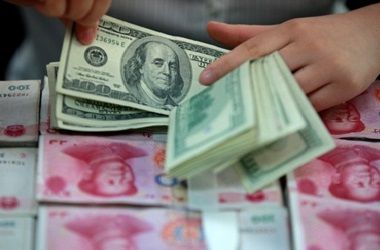This article was originally published by the Official Monetary and Financial Institutions Forum (OMFIF) in the The OMFIF Commentary.
China’s renminbi policy is running into contradictions. With worldwide monetary policy in flux as the main industrial countries adopt competing monetary approaches, various aspects of the renminbi’s internationalisation are running into each other, creating inevitable complications and conflicts.
The current phase of economic weakening requires an export stimulus by depreciation. But national policy considerations demand monetary soundness, making centralised Chinese-style currency management fraught with difficulty. Outsourcing currency policy to the foreign exchange departments of large companies, which would use appropriate derivatives and hedging instruments to handle risks, might be the answer – but that would imply a loss of control that Beijing might find unacceptable.
China has been pushing ahead with the internationalisation of the renminbi as a currency for trade, and this is set to go further. Despite big increases in renminbi invoicing, the overall amount as a proportion of world trade remains extremely low. According to the People’s Bank of China’s 2015 internationalisation report, the renminbi was the world’s fifth most used payment currency, the second most used trade finance currency, and the sixth most traded currency in 2014.
Renminbi trade use naturally accompanies a build-up of reserves of the Chinese currency in central banks around the world, particularly in countries (like Nigeria and Australia) with considerable commodity and raw materials exports to China. These official holdings were relatively non-controversial when renminbi appreciation was seen as a one-way bet against the dollar. But this policy is more difficult for central banks and reserve funds to explain to their political masters when the renminbi and national reserves are falling. This is particularly galling if the depreciation of the renminbi is seen as possibly engineered by China for export promotion purposes.
China’s response is that the renminbi has not moved much in trade-weighted terms against a basket of 15 currencies. The trade-weighted index of the Shanghai-based China Foreign Exchange Trading System shows a trade-weighted renminbi appreciation of around 3% last year, similar to the index computed by the Bank for International Settlements.
Although the renminbi’s depreciation against the dollar in the past few months has caused an underlying increase in import prices, this has been more than offset by the much larger collapse in world commodity prices. But Chinese car drivers are being asked to pick up some of the bill for the falling renminbi: any further fall in world oil prices below US$40 per barrel is not being passed on in the form of lower prices at the Chinese pumps. This will keep transport costs high in the vastness of China. The move is of course a rather blunt but effective way of keeping air pollution from rising even further in Chinese cities. It comes at a time when China’s government is importing record volumes of cheap oil at low prices to replenish its strategic reserve stocks.
Chinese officials, academics and think-tanks have been examining the benefits and costs of a drift towards some sort of ‘seigniorage’ effect for the renminbi, and comparing it to the dollar experience.
As in the case of the US, China would benefit from the issue of renminbi to non-Chinese entities. Greater volumes of Chinese debt held by foreign asset managers would reduce debt service costs. The seigniorage effect could enable China, as is the case in the US, to run a looser fiscal and monetary policy – a useful adjunct to policy during the current Chinese push to keep the budget deficit down.
On the other hand, an appreciating currency harms exports, and higher demand for Chinese assets could reduce returns to Chinese savers by depressing domestic interest rates. Weighing up the pros and cons of currency internationalisation is a central task of Beijing’s financial management.
– John Adams is Director of China Financial Services and a member of OMFIF’s advisory board.
